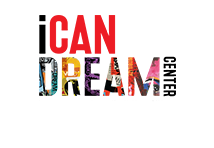
Pragmatics
One of the biggest concerns for teens with a diagnosis of autism spectrum disorder is their social communication skills. As students become older, the focus of their speech therapy starts to stray away from the academic side and focuses more on the social aspects of communication. For example, how to initiate, continue and end a conversation, use body language, and use different language skills depending on the environment.
Before continuing the conversation of pragmatics and how it relates to speech therapy, we must identify what these components mean. According to ASHA, Pragmatics understands the social aspects of spoken language, including conversational exchanges (ASHA 2021). Also, pragmatics is the understanding of the individual point-of-view, needs of their audiences, and the intended messages of the conversational partner (ASHA 2021). As students become older, they need to understand social cues in order to work on their social skills in academic settings and professional settings such as job interviews.

Why do speech therapists work on pragmatics skills as part of their speech therapy? In the below diagram, you will see the roles speech therapists have. Within this diagram, you will see that social communication is one of the roles speech therapists play with individuals who may struggle to have social communication. If a student has difficulties with social communication, that may hinder their learning and growth as they become older. Speech therapists will implement interventions that include pragmatic skills, which are essential to learn as students become older.
In a study by Adams and colleagues in 2005, they discovered that utilizing pragmatic therapy as an intervention decreased the clients’ conversational barriers and increased their ability to communicate positively. Speech therapists have been implementing pragmatic therapy within their practices for many years. It has been shown to increase the client’s ability to communicate with others and become more confident within themselves.
At the iCan Dream Center, the speech therapists utilize different social communication skills with the students. The clinicians have used both small and large group settings to work on various social skills. This has been shown to improve a lot of the client’s ability to communicate with others and increase their confidence. The older students (ages 14-22) have had the opportunity to work together on different skills; as the students become more confident with their abilities, the better the outcome. Social communication is in everyday life, and it is vital to develop those skills.
References
Adams, C., Baxendale, J., Lloyd, J., & Aldred, C. (2005). Pragmatic language impairment: case studies of social and pragmatic language therapy. Child Language Teaching and Therapy, 21(3), 227-250.
American Speech-Language-Hearing Association. (2021). Language in brief. American Speech-Language-Hearing Association. Retrieved November 1, 2021, from https://www.asha.org/practice-portal/clinical-topics/spoken-language-disorders/language-in-brief/.
